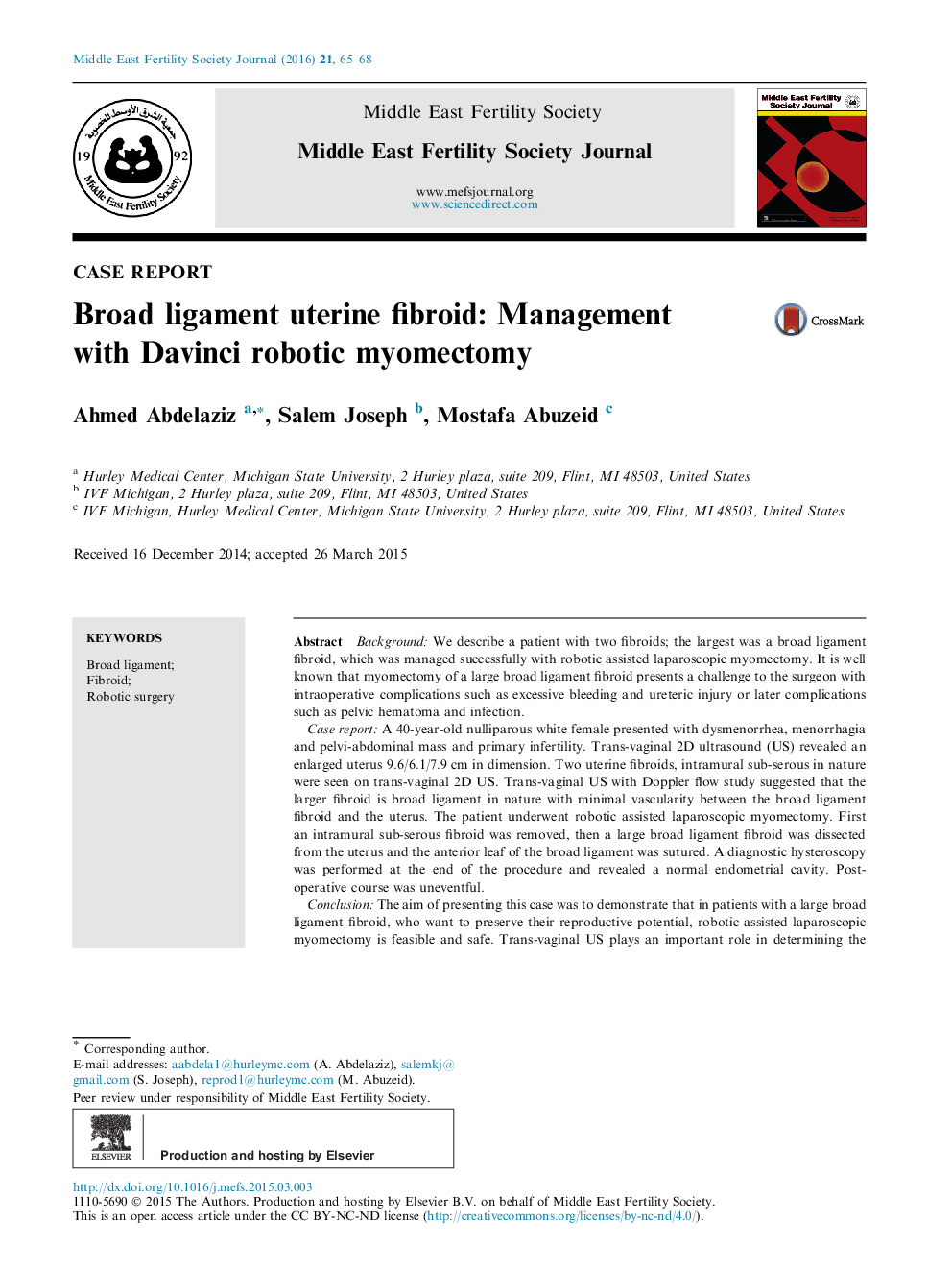| Article ID | Journal | Published Year | Pages | File Type |
|---|---|---|---|---|
| 3966075 | Middle East Fertility Society Journal | 2016 | 4 Pages |
Background: We describe a patient with two fibroids; the largest was a broad ligament fibroid, which was managed successfully with robotic assisted laparoscopic myomectomy. It is well known that myomectomy of a large broad ligament fibroid presents a challenge to the surgeon with intraoperative complications such as excessive bleeding and ureteric injury or later complications such as pelvic hematoma and infection.Case report: A 40-year-old nulliparous white female presented with dysmenorrhea, menorrhagia and pelvi-abdominal mass and primary infertility. Trans-vaginal 2D ultrasound (US) revealed an enlarged uterus 9.6/6.1/7.9 cm in dimension. Two uterine fibroids, intramural sub-serous in nature were seen on trans-vaginal 2D US. Trans-vaginal US with Doppler flow study suggested that the larger fibroid is broad ligament in nature with minimal vascularity between the broad ligament fibroid and the uterus. The patient underwent robotic assisted laparoscopic myomectomy. First an intramural sub-serous fibroid was removed, then a large broad ligament fibroid was dissected from the uterus and the anterior leaf of the broad ligament was sutured. A diagnostic hysteroscopy was performed at the end of the procedure and revealed a normal endometrial cavity. Post-operative course was uneventful.Conclusion: The aim of presenting this case was to demonstrate that in patients with a large broad ligament fibroid, who want to preserve their reproductive potential, robotic assisted laparoscopic myomectomy is feasible and safe. Trans-vaginal US plays an important role in determining the degree of attachment, location and vascularity between the uterus and the broad ligament fibroid, which in turn helps in the choice of surgical procedure and technique.
